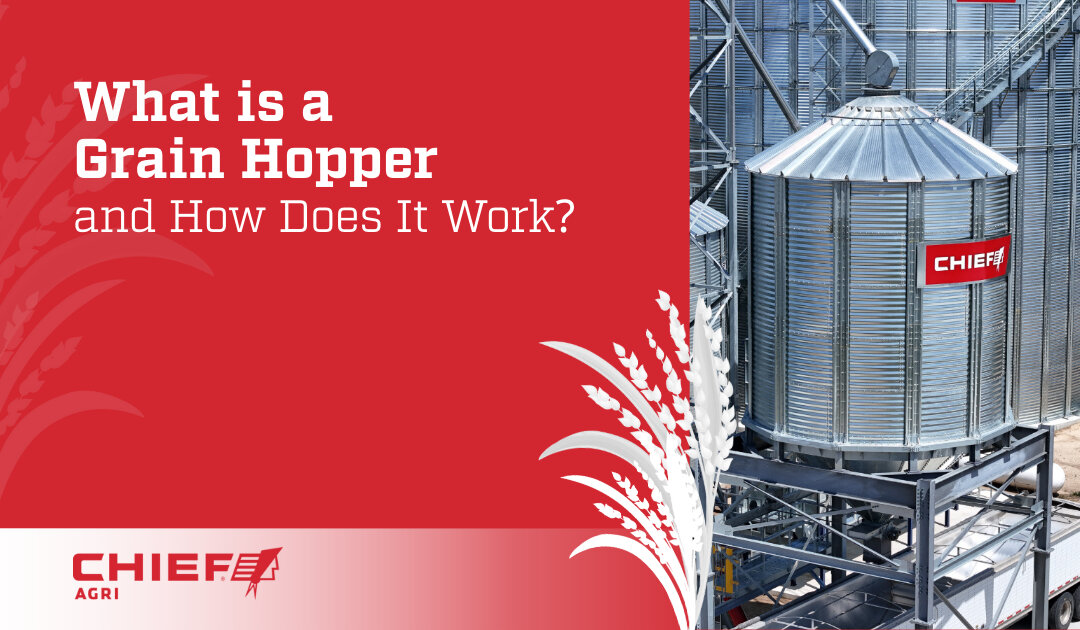Grain Hopper Bins: Understanding Essential Grain Handling Equipment
Efficient grain handling is the backbone of modern agriculture, and at the heart of many grain handling systems lies a crucial piece of equipment: the grain hopper. But what is a grain hopper, and what is it used for?
As a leader in providing comprehensive grain storage equipment, Chief Agri understands the vital role these components play in the agricultural landscape. We’ll explain what a grain hopper bin is, what its function is within grain handling and storage systems, and how it contributes to seamless agricultural operations.
Defining the Grain Hopper and Its Purpose
So, what exactly is a grain hopper? In agricultural terminology, it refers to a specialized container designed to temporarily hold and facilitate the transfer of grain or other free-flowing agricultural materials. The typical structure features a wide opening at the top for easy loading and a conical or sloping bottom that narrows to a discharge point.
This design is fundamental to its function because it harnesses gravity to ensure the smooth and complete emptying of the stored material. The primary purpose of a grain hopper tank is to act as an intermediary point for controlled and efficient movement of commodities from one stage to another in the grain handling process.
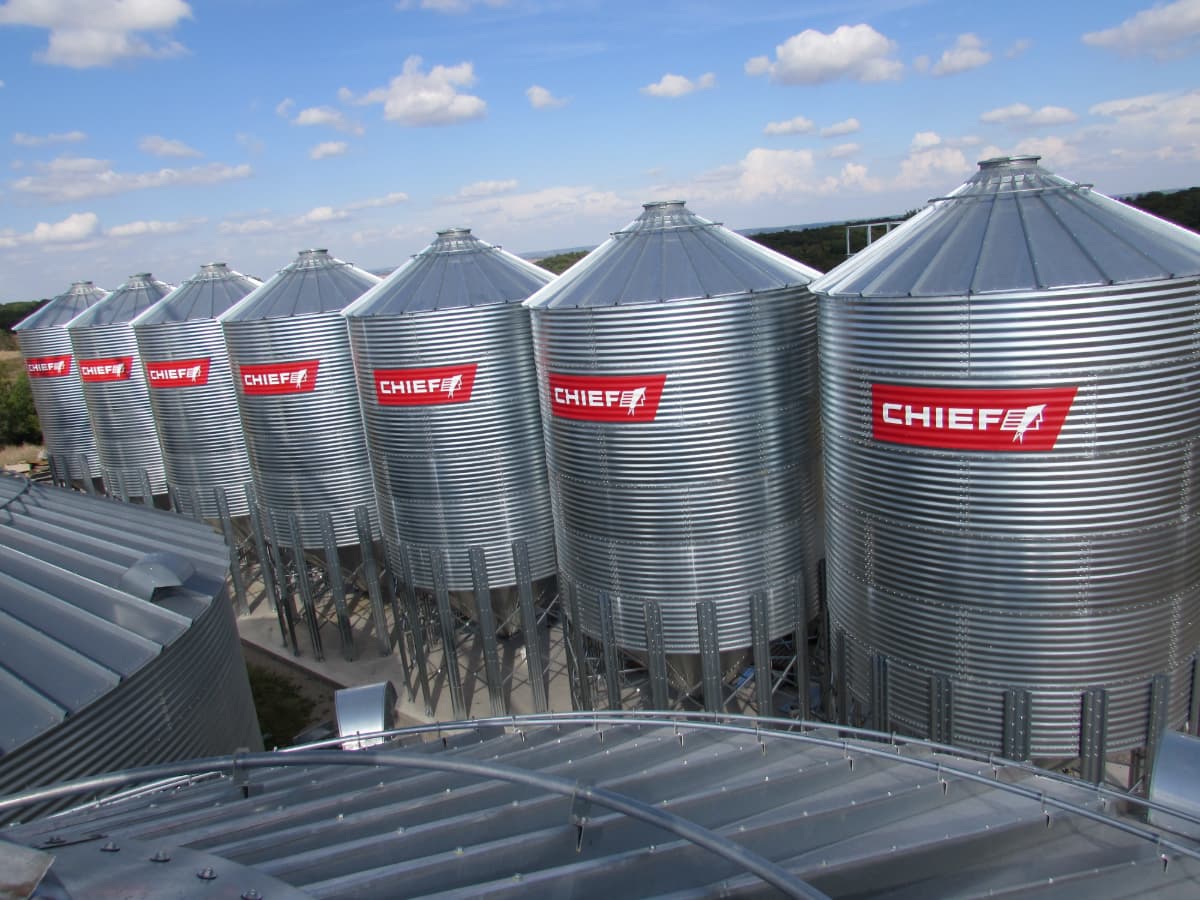
Hopper, Hopper Bin, Hopper Tank: How They Differ
While the terms are often used somewhat interchangeably in general agricultural terminology, there are distinctions to be made between a grain hopper, a grain hopper bin, and a grain hopper tank. All three terms relate to containers that utilize a sloping bottom for efficient grain transfer, and understanding the differences between them can provide a clearer picture of their specific roles in grain handling equipment.
Grain Hopper
A grain hopper is the most general term, referring to a funnel-shaped container designed for the temporary holding and transfer of grain. Its key characteristic is the sloping bottom that facilitates gravity-assisted unloading. Grain hoppers can be found in various forms and sizes, both mobile and stationary.
Grain Hopper Bin
A grain hopper bin typically refers to a more substantial, often stationary structure that incorporates the design principles of a grain hopper. These are generally larger in capacity than mobile grain hoppers and are designed as a more permanent fixture within a grain storage equipment system.
Grain hopper bins often serve as temporary storage points, facilitating efficient unloading into trucks, railcars, or processing equipment. They are built to withstand larger volumes of grain and are usually constructed from robust materials like steel.
Grain Hopper Tank
The term grain hopper tank often implies a specific type of grain hopper bin that may have additional features or be designed for particular applications. While it still functions on the principle of gravity unloading, a grain hopper tank might be engineered for specific types of grain (wet or dry), integration with drying or conditioning systems, or even longer-term storage in some cases.
Some manufacturers use the term “grain hopper tank” to denote a robust grain hopper bin capable of supporting heavier loads or designed for industrial applications. They might also feature specialized discharge mechanisms or be built with thicker gauge steel for increased durability.
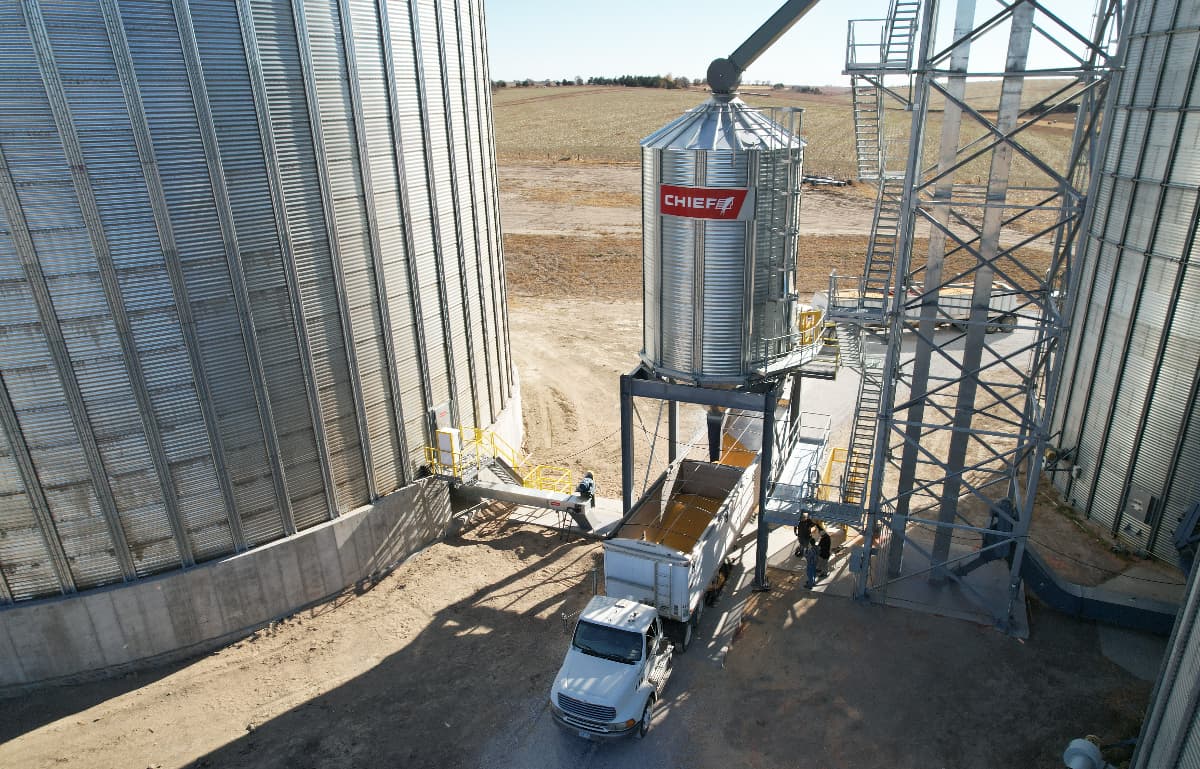
How Does a Grain Hopper Work? The Mechanics of Grain Transfer
The grain hopper operation process begins with loading the grain into the top opening, often directly from harvesting equipment, conveyors, or elevators. Once inside, the sloping walls of the grain hopper bin guide the grain downwards towards the discharge mechanism.
The efficient unloading of a grain hopper relies heavily on its design and the type of discharge mechanism employed. Common mechanisms include:
- Slide gates: Can be manually or pneumatically controlled to regulate the flow of grain.
- Augers: Use a rotating screw to move the grain out of the hopper.
The discharge points are strategically positioned to integrate seamlessly with other grain handling equipment, such as conveyors that transport the grain to storage facilities or processing plants, and elevators that lift the grain to higher levels.
The Role of Grain Hoppers in Grain Storage Systems
These grain hopper bins serve as crucial temporary storage solutions, allowing for a buffer between different stages of grain handling. They come in various capacities, depending on the specific needs of the operation, and are typically constructed from durable materials like steel to withstand the weight of the grain and environmental factors.
The efficient grain management facilitated by grain hopper bins ensures a smooth grain handling workflow, minimizing bottlenecks and maximizing throughput.
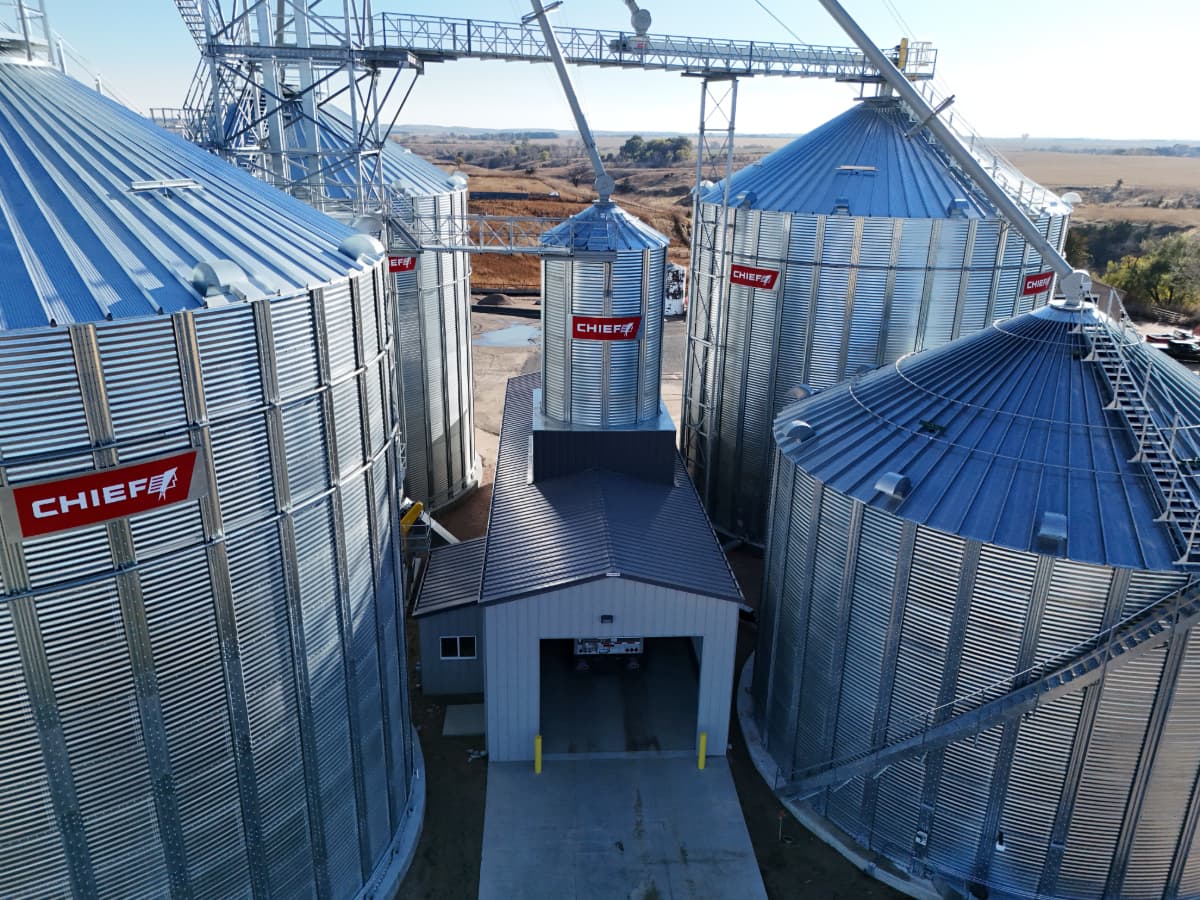
Different Types of Grain Hoppers and Their Applications
The specific design and application of a grain hopper can vary significantly depending on its intended use. Some common types include:
- Truck-mounted hoppers: Designed for mobility, allowing for efficient unloading of grain directly from combines or other harvesting equipment into trucks for transportation.
- Stationary hoppers: Typically larger and permanently installed at storage facilities or processing plants, serving as central collection and transfer points.
- Railcar hoppers: Specialized hoppers built into railcars facilitate the bulk transport of grain over long distances.
The type of grain being handled can also influence the design of the grain hopper. For instance, lighter or more free-flowing grains might require different discharge mechanisms or steeper slopes compared to denser commodities. Understanding these variations is crucial for selecting the appropriate grain handling equipment for specific agricultural needs.
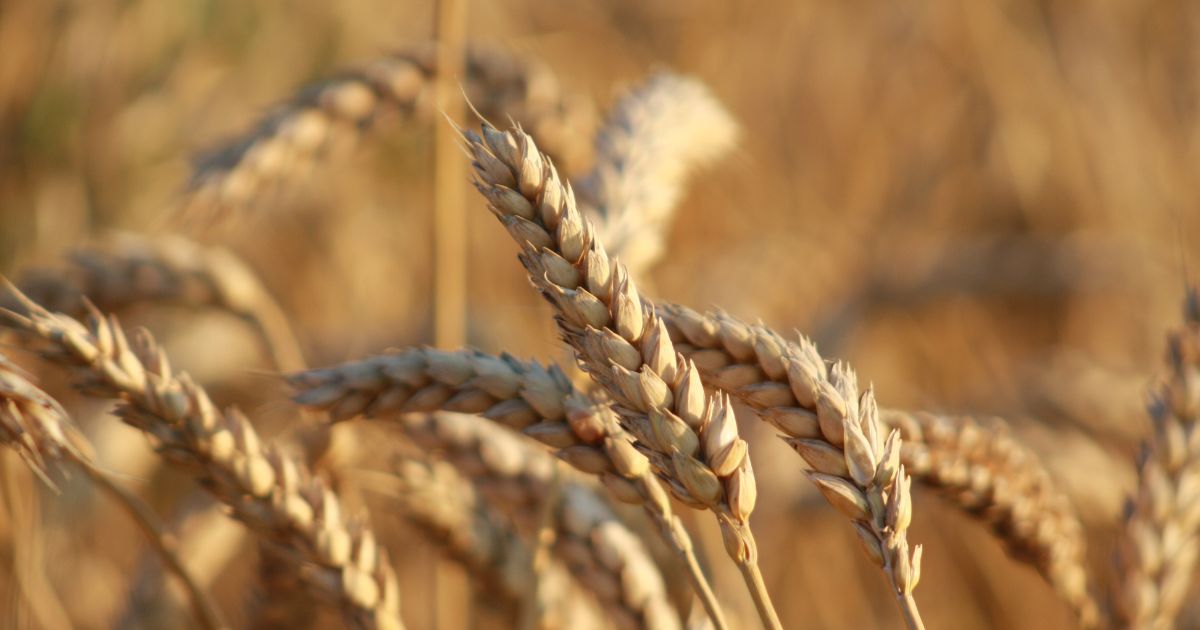
Advantages of Using Grain Hoppers in Agricultural Operations
The integration of grain hoppers into agricultural operations offers numerous advantages, significantly impacting efficiency and productivity:
- Efficiency Gains: Grain hoppers streamline the transfer process, allowing for quicker loading and unloading compared to manual methods.
- Reduced Manual Labor and Time Savings: By utilizing gravity and automated discharge systems, grain hoppers minimize the need for manual handling of grain, saving valuable time and labor costs.
- Maintaining Grain Quality: The controlled transfer facilitated by grain hoppers helps to reduce damage to the grain, maintaining its quality during handling.
Preventing Spillage and Waste: The enclosed design of a grain hopper minimizes the risk of spillage and loss of valuable grain during transfer.
Key Considerations When Choosing and Using a Grain Hopper
Selecting the right grain hopper and using it effectively are critical for maximizing its benefits. Key factors to consider during selection include:
- Capacity: Choose a grain hopper bin with sufficient capacity to meet the demands of the operation.
- Material: Select a durable and corrosion-resistant material suitable for the type of grain being handled and the environmental conditions.
- Discharge Mechanism: Opt for a discharge mechanism that aligns with the downstream equipment and the flow characteristics of the grain.
- Mobility: Determine whether a stationary or mobile grain hopper best suits the operational needs.
For safe and efficient operation, follow manufacturer guidelines and implement best practices for loading, unloading, and maintenance. Regular inspection and basic maintenance tips, such as ensuring proper lubrication of moving parts and cleaning to prevent blockages, can significantly extend the lifespan of a grain hopper bin.
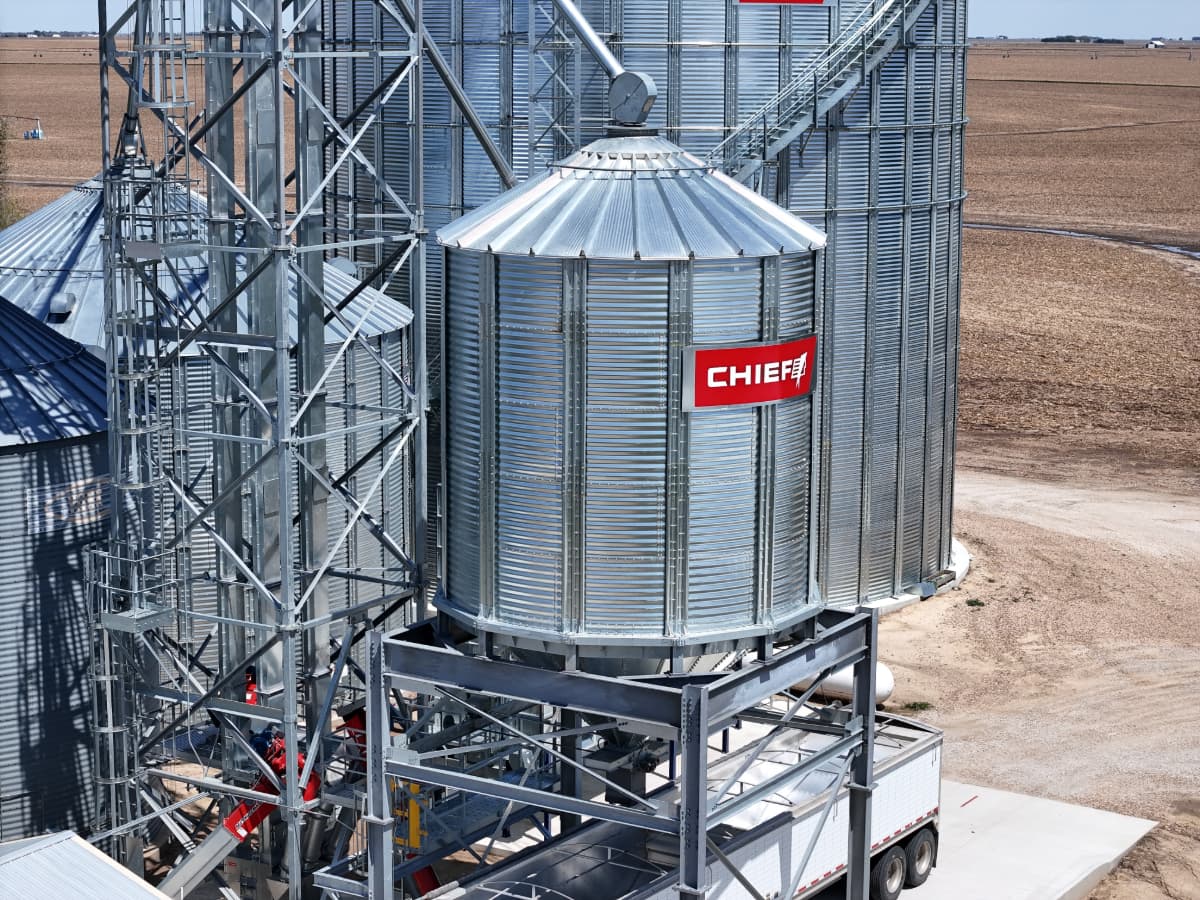
Chief Agri: Trusted for Grain Hopper Tanks and More
From the moment crops are harvested to their final processing, the ability to move and store grain effectively is paramount for productivity and profitability. A grain hopper is a fundamental component of modern grain handling equipment, serving as an essential intermediary for the temporary holding and efficient transfer of grain.
Whether mobile truck-mounted units or large stationary grain hopper bins, these structures contribute to efficiency, reduced labor, and maintenance of grain quality. Recognizing the importance of grain hoppers and their integration within broader grain storage equipment systems is key for optimizing agricultural productivity.
As leaders in grain storage solutions, Chief Agri offers a range of high-quality products, including grain hopper tanks, designed to meet the diverse needs of modern agriculture. Contact us today to learn more about our customized grain storage equipment and how our solutions can enhance the efficiency of your business.

